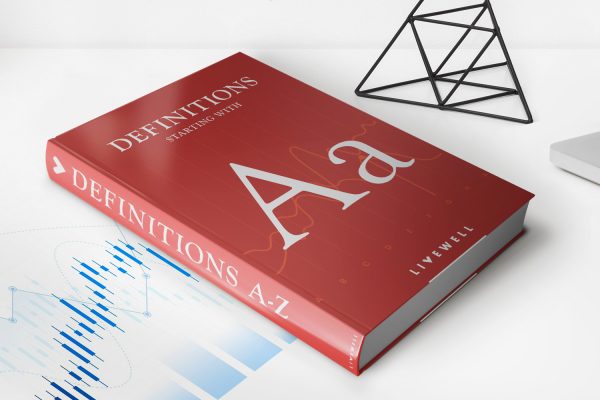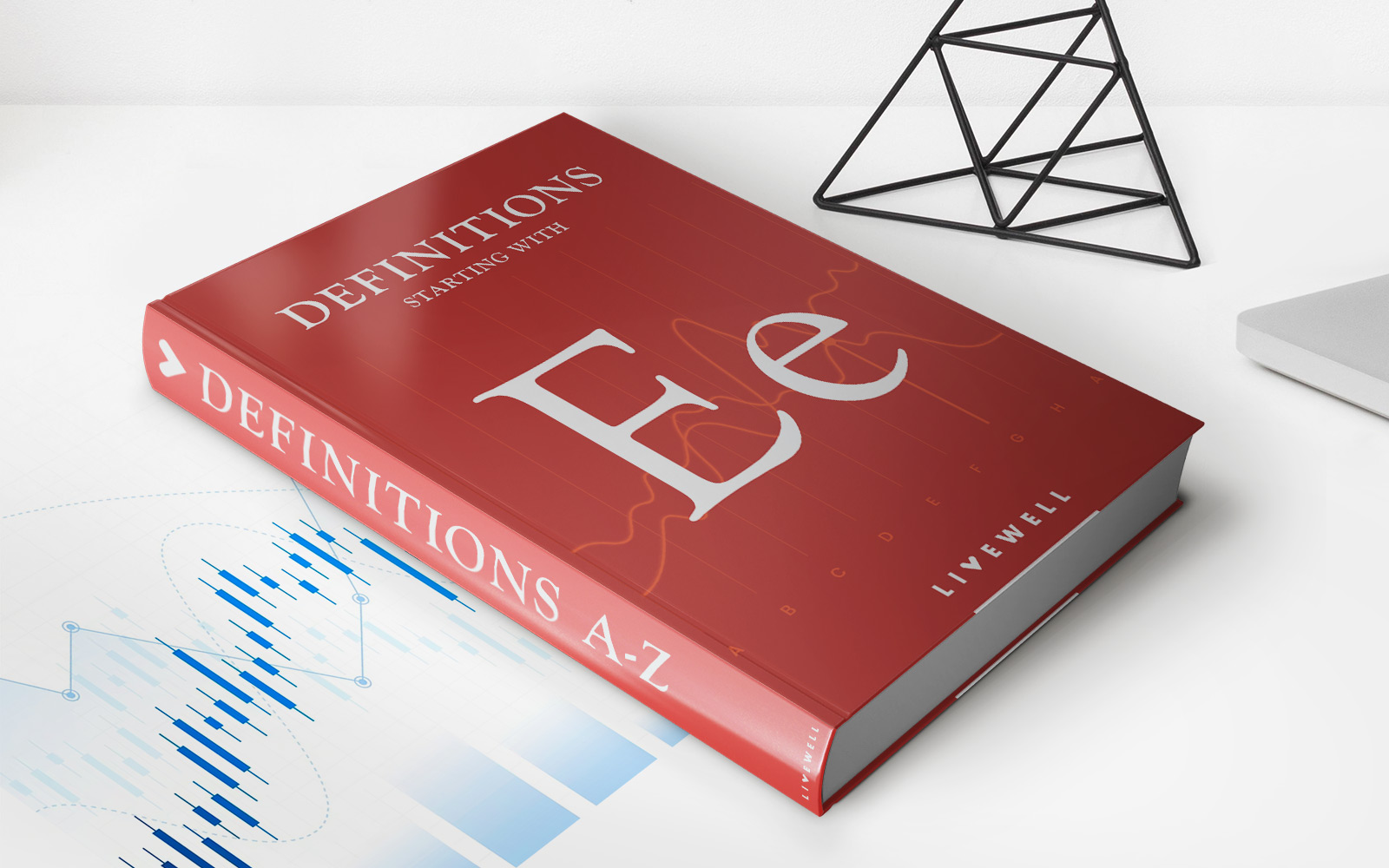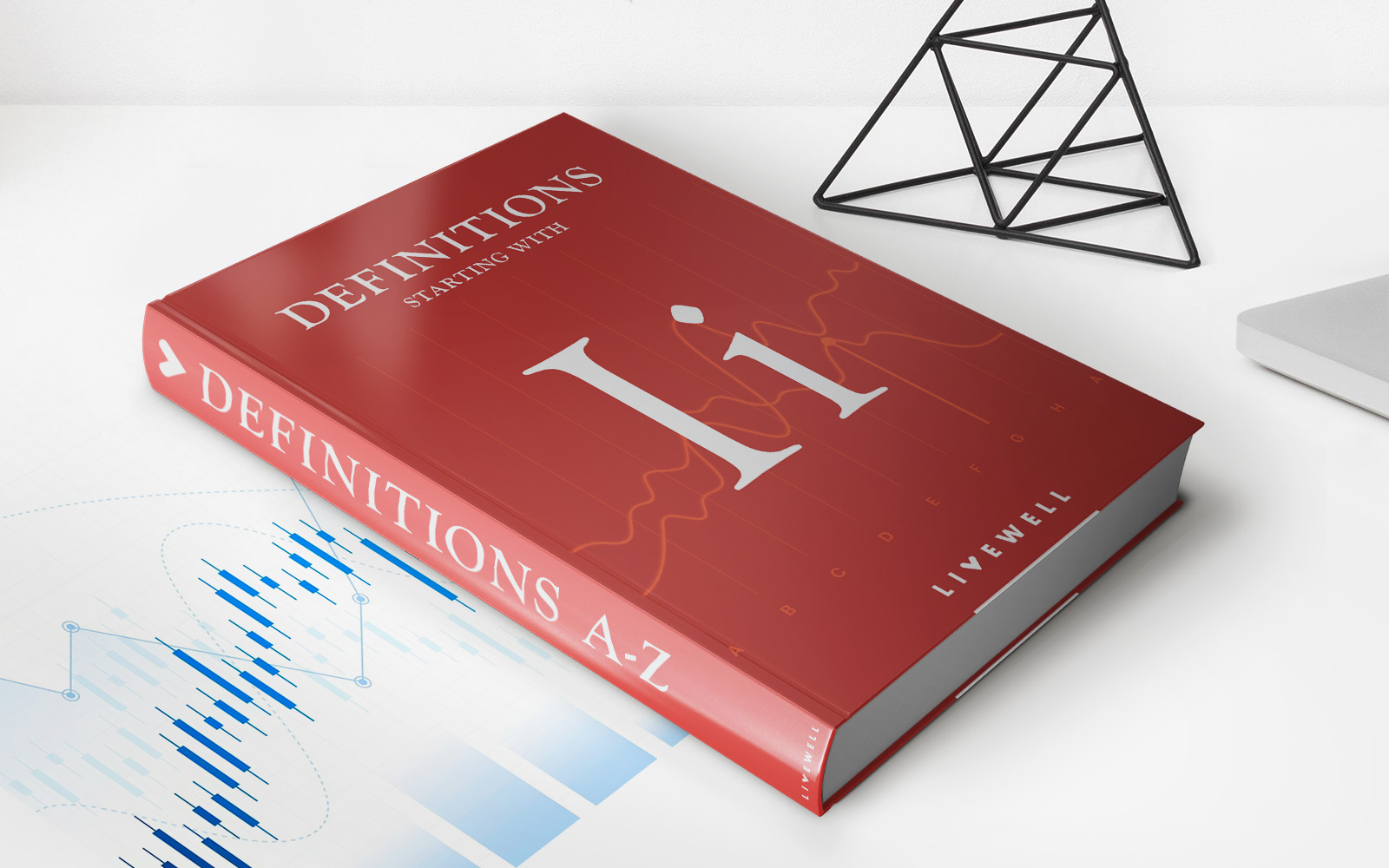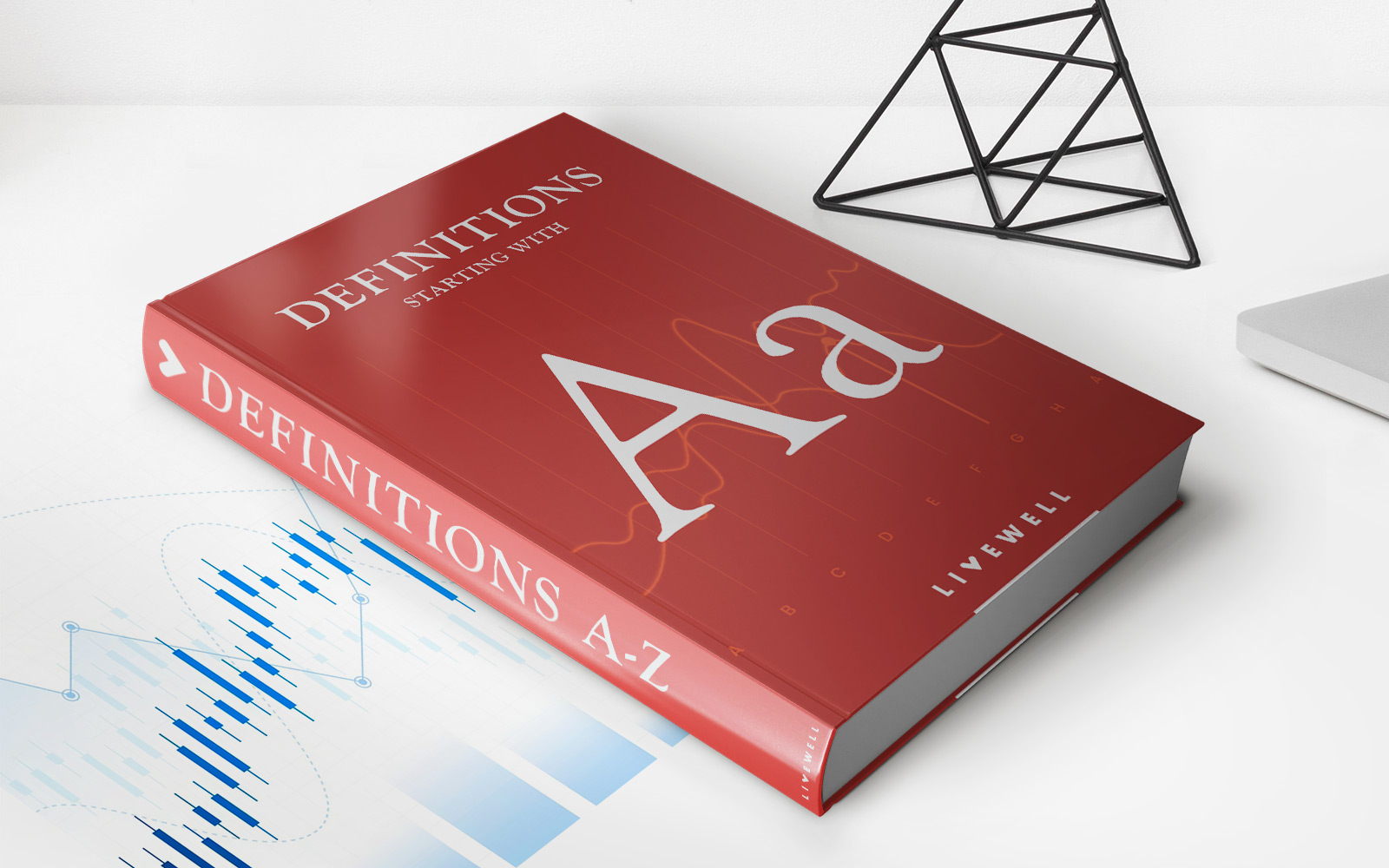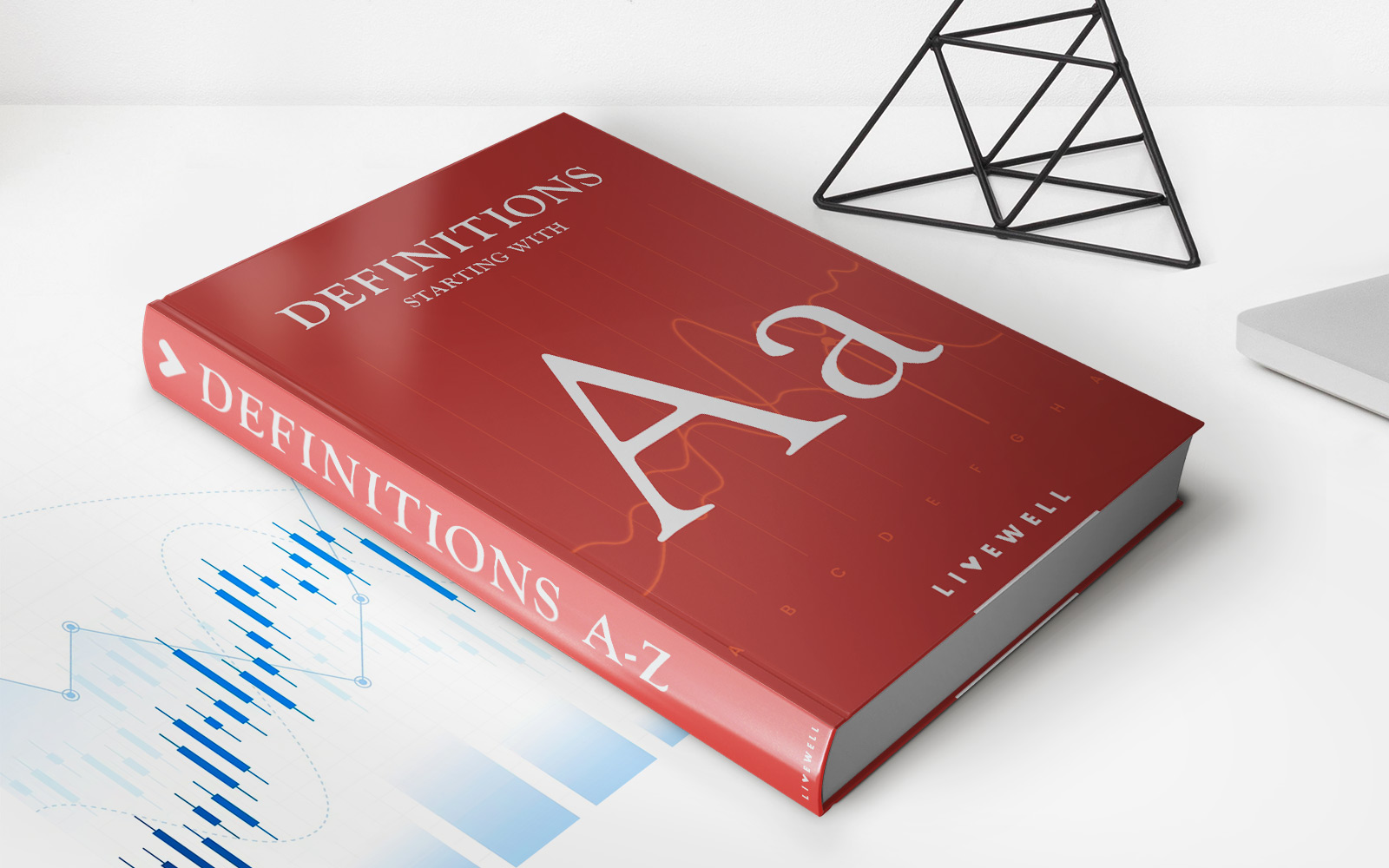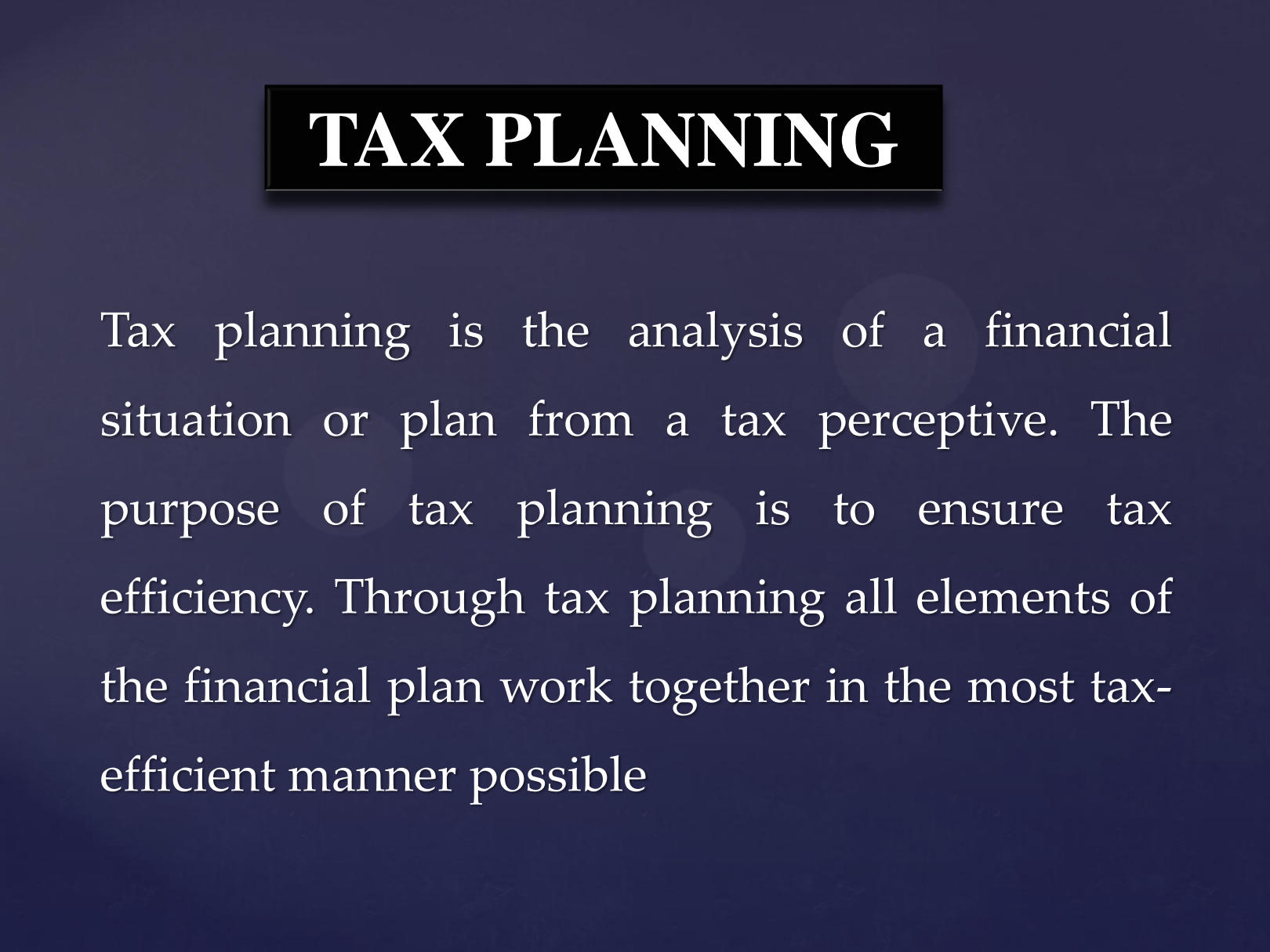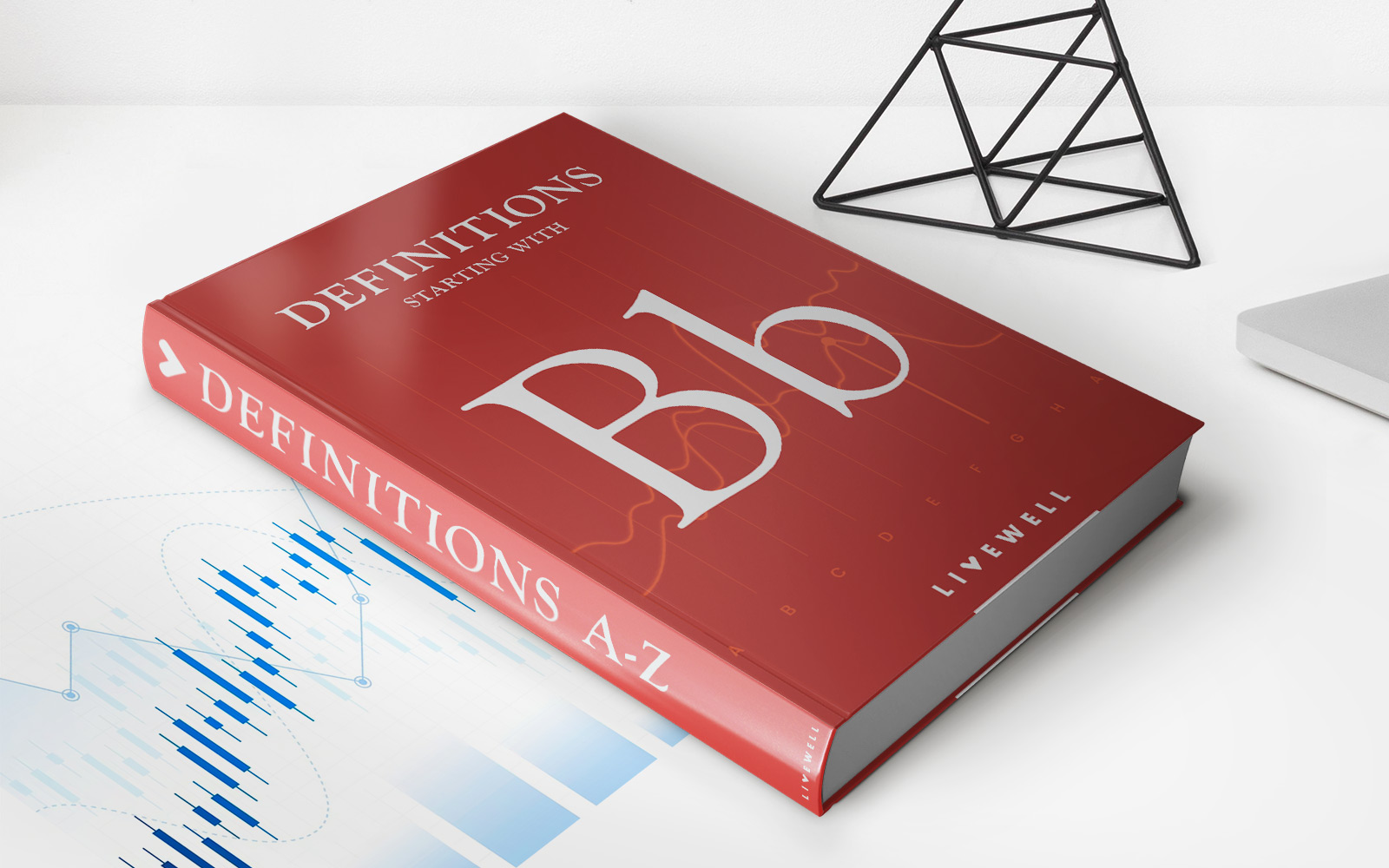

Finance
What Is The Allowance Method In Accounting
Published: October 10, 2023
Learn all about the allowance method in accounting, a crucial financial concept. Understand how it affects finances and gain valuable insights into managing your accounts.
(Many of the links in this article redirect to a specific reviewed product. Your purchase of these products through affiliate links helps to generate commission for LiveWell, at no extra cost. Learn more)
Table of Contents
- Introduction
- Definition of the Allowance Method
- Purpose of the Allowance Method
- Steps in Using the Allowance Method
- Recording Bad Debts Expense
- Estimating Uncollectible Accounts
- Writing Off Bad Debts
- Recording Recovery of Bad Debts
- Reporting Bad Debts in Financial Statements
- Example of Allowance Method in Action
- Advantages and Disadvantages of the Allowance Method
- Conclusion
Introduction
When it comes to managing finances, one crucial aspect for any business is dealing with bad debts. Bad debts occur when customers fail to pay their outstanding debts, causing a financial loss for the company. In the field of accounting, there are various methods used to handle bad debts and account for potential losses. One of the most commonly used methods is the Allowance Method.
The Allowance Method is an accounting technique that allows businesses to anticipate and account for potential bad debts. It helps companies estimate the amount of revenue that may not be collected from customers and creates a provision or allowance for those uncollectible amounts. By using this method, businesses can accurately report their financial statements and mitigate the impact of bad debts on their profitability.
Implementing the Allowance Method requires careful consideration and analysis of past data, industry trends, and customer payment patterns. It involves estimating the percentage of receivables that are unlikely to be collected and recording them as a provision for bad debts. This provision is then used to offset the accounts receivable balance, resulting in a more accurate representation of the company’s financial position.
Furthermore, the Allowance Method allows businesses to match the revenue and related expenses in the same accounting period. This practice follows the generally accepted accounting principles (GAAP) and provides a more realistic picture of the company’s financial performance. By recording bad debts as an expense in the same period as the related revenue, businesses can accurately reflect the true profitability of their operations.
In the following sections, we will delve deeper into the definition, purpose, steps, and reporting of the Allowance Method, providing a comprehensive understanding of this essential accounting technique.
Definition of the Allowance Method
The Allowance Method, also known as the Allowance for Doubtful Accounts Method or Provision for Bad Debts Method, is an accounting approach used to estimate and account for potential bad debts. It allows businesses to anticipate and prepare for uncollectible accounts before they become a financial burden.
Under this method, a company creates an allowance or reserve for bad debts on its financial statements. The allowance is a contra-asset account that reduces the accounts receivable balance to reflect the estimated portion that is unlikely to be collected.
When a sale is made, the transaction is initially recorded as revenue and a corresponding increase in accounts receivable. However, as time goes by and if payment is not received, the company may determine that the amount is uncollectible. Instead of directly reducing the accounts receivable at that point, the company records an expense called bad debts expense and reduces the allowance for bad debts by the same amount.
By doing so, the company separates the estimation of bad debts from the actual accounts receivable balance. This provides a more accurate representation of the company’s assets and financial position. It also ensures that expenses related to bad debts are recognized in the same period as the revenue generated from those accounts.
The calculation of the allowance for bad debts is typically based on historical data and industry averages. Companies review their past collection experience and the age of outstanding receivables to estimate the portion that is likely to be uncollectible. Factors such as economic conditions, customer payment trends, and other relevant factors are also considered in this estimation process.
It’s important to note that the allowance method is used for estimating and recording anticipated bad debts for accounts receivable. It is not used for long-term assets like inventory or fixed assets where a different valuation method is applied.
By utilizing the Allowance Method, companies can better manage the impact of bad debts on their financial statements and make informed business decisions regarding credit policies, collections, and customer relationships.
Purpose of the Allowance Method
The primary purpose of the Allowance Method is to accurately reflect the financial position and profitability of a business by accounting for potential bad debts. This accounting technique serves several important purposes for companies:
- Anticipating and Preparing for Bad Debts: The Allowance Method allows businesses to anticipate and account for potential bad debts before they occur. By estimating the portion of accounts receivable that may become uncollectible, companies can create a reserve or allowance to offset the impact of these potential losses.
- Matching Principle: The Allowance Method follows the matching principle, a fundamental concept in accounting. According to this principle, expenses should be recognized in the same period as the revenue they generate. By recording bad debts as an expense in the same period as the related revenue, businesses can ensure that their financial statements accurately reflect the true profitability of their operations.
- Accurate Financial Statements: By using the Allowance Method, companies can present accurate and reliable financial statements. The allowance for bad debts reduces the accounts receivable balance to reflect the estimated portion that may not be collected. This adjustment provides a more realistic picture of the company’s assets and financial position.
- Facilitating Decision-Making: The Allowance Method provides valuable information for businesses to make informed decisions regarding credit policies, collections, and customer relationships. By estimating and accounting for potential bad debts, companies can better assess the creditworthiness of customers and set appropriate credit limits. It also helps businesses identify areas where collections efforts need to be intensified or where adjustments to credit terms may be necessary.
- Compliance with Accounting Standards: The Allowance Method ensures that companies comply with generally accepted accounting principles (GAAP) and international financial reporting standards (IFRS). These standards require businesses to accurately report their financial statements and disclose potential losses from bad debts. By using this method, companies can maintain transparency and accountability in their financial reporting.
Overall, the purpose of the Allowance Method is to provide businesses with a systematic approach to estimating and accounting for potential bad debts. It helps maintain the accuracy and reliability of financial statements, facilitates decision-making, and ensures compliance with accounting standards. By implementing this method, companies can mitigate the impact of bad debts and effectively manage their receivables.
Steps in Using the Allowance Method
The Allowance Method involves several steps to properly estimate and account for bad debts. These steps ensure that businesses can accurately reflect the potential losses from uncollectible accounts. Here are the key steps in using the Allowance Method:
- Review Historical Data: The first step is to review past collection experience and analyze historical data. By examining previous payment patterns and the average percentage of bad debts, companies can gain insight into the likelihood of future uncollectible accounts.
- Analyze Customer Aging: Assessing the age of outstanding receivables is crucial. Older accounts tend to have a higher risk of becoming bad debts. Companies categorize accounts receivable based on their aging, such as current, 30 days past due, 60 days past due, and so on. This analysis helps identify the portion of accounts that might be at risk.
- Determine the Bad Debts Percentage: Based on the review of historical data and the accounts’ aging analysis, companies estimate the bad debts percentage. This percentage represents the portion of accounts receivable that is expected to become uncollectible. It can vary depending on factors such as industry norms, economic conditions, and the company’s specific customer base.
- Calculate the Allowance for Bad Debts: Once the bad debts percentage is determined, companies calculate the amount of the allowance for bad debts. This is done by multiplying the percentage with the total accounts receivable balance. The resulting figure represents the estimated uncollectible amount that needs to be set aside as a provision.
- Record the Adjustment: The next step is to record the adjustment in the accounting records. Companies create an adjusting entry to recognize the bad debts expense and reduce the allowance for bad debts by the estimated amount. This entry ensures that the financial statements accurately reflect the provision for potential losses.
- Monitor and Evaluate: Ongoing monitoring and evaluation of the allowance for bad debts is essential. Companies should regularly assess the adequacy of the allowance by comparing it to the actual bad debt experience over time. Adjustments may need to be made based on changes in customer payment patterns, economic conditions, or other relevant factors.
By following these steps, businesses using the Allowance Method can systematically estimate and account for potential bad debts. This helps maintain the accuracy of financial statements and ensures that provisions are in place to mitigate the impact of uncollectible accounts.
Recording Bad Debts Expense
Recording bad debts expense is an important step in the Allowance Method as it allows businesses to accurately reflect the potential losses from uncollectible accounts. When a company determines that a specific customer’s account is unlikely to be collected, the following steps are taken to record the bad debts expense:
- Identify the Uncollectible Account: The first step is to identify the specific customer account that is deemed uncollectible. This determination is typically based on factors such as the customer’s historical payment behavior, communication with the customer, and any other relevant information.
- Calculate the Amount: Once the uncollectible account is identified, the company needs to determine the amount of the bad debts expense. This is typically the outstanding balance of the customer’s account that is considered uncollectible. It is important to note that the amount should be based on a reasonable estimate of the potential loss to accurately reflect the financial position.
- Create the Journal Entry: The next step is to create a journal entry to record the bad debts expense. The entry debits the bad debts expense account and credits the allowance for bad debts account. By doing so, the expense is recognized, and the allowance is adjusted accordingly. This entry ensures that the financial statements reflect the provision for potential losses.
- Reduce the Accounts Receivable: After recording the bad debts expense, the accounts receivable balance associated with the uncollectible account needs to be reduced. This is done by creating another journal entry that credits the accounts receivable account and debits the allowance for bad debts account. By reducing the accounts receivable, the company reflects the estimated portion that is not expected to be collected, resulting in a more accurate representation of assets.
These steps ensure that the bad debts expense is properly recorded in the accounting records. By recognizing the expense, businesses can reflect the potential losses from uncollectible accounts and maintain accurate financial statements that portray the true financial position of the company.
Estimating Uncollectible Accounts
Estimating uncollectible accounts is a crucial part of the Allowance Method as it allows businesses to anticipate and account for potential bad debts. Companies analyze various factors to estimate the portion of accounts receivable that may become uncollectible. Here are the key steps involved in estimating uncollectible accounts:
- Review Historical Data: Companies start by reviewing historical data on collection experience. They analyze past payment patterns, customer behavior, and the average percentage of bad debts to gain insights into potential future losses. This historical analysis serves as a foundation for estimating uncollectible accounts.
- Assess Customer Aging: Analyzing the age of outstanding receivables is essential in estimating uncollectible accounts. Older accounts have a higher risk of becoming bad debts. By categorizing accounts based on their aging, such as current, 30 days past due, 60 days past due, companies can identify the portion of accounts that may become uncollectible.
- Consider Economic Conditions: Economic conditions play a role in estimating uncollectible accounts. During economic downturns or periods of financial instability, the likelihood of bad debts typically increases. Companies need to factor in the overall economic climate and its potential impact on customer payment behavior.
- Account for Industry Norms: Each industry has its own norms and benchmarks for bad debts. Companies compare their collection experience and percentage of bad debts to industry averages. This helps ensure that estimations align with industry standards and provide a realistic portrayal of potential losses.
- Consider Individual Customer Risk: Not all customers carry the same level of creditworthiness. Companies assess individual customer risk by considering factors such as their credit history, financial stability, and payment patterns. This analysis helps in distinguishing high-risk customers who may have a higher likelihood of becoming bad debts.
By using these steps, companies can estimate the portion of accounts receivable that may become uncollectible. This estimation forms the basis for creating the allowance for bad debts, adjusting the financial statements to account for potential losses. It is important to regularly review and update these estimations based on changing economic conditions, customer behaviors, and industry trends.
Writing Off Bad Debts
Writing off bad debts is a necessary step in the Allowance Method when an account is deemed uncollectible and there is no future expectation of payment. Writing off bad debts removes the uncollectible account from the accounts receivable and adjusts the financial records accordingly. Here are the key steps involved in writing off bad debts:
- Identify the Uncollectible Account: The first step is to identify the specific customer account that is considered uncollectible. This determination is typically made after thorough analysis of the customer’s payment history, communication efforts, and other relevant factors. Management approval may be required in some cases.
- Update the Allowance for Bad Debts: Prior to writing off the bad debt, the allowance for bad debts account needs to be adjusted. This involves creating a journal entry that debits the allowance for bad debts and credits the accounts receivable, reducing the accounts receivable balance by the uncollectible amount.
- Create the Write-Off Entry: The next step is to create a journal entry to write off the bad debt. This entry debits the bad debts expense account and credits the accounts receivable. By doing so, the expense is recognized, reflecting the loss incurred from the uncollectible account.
- Removal from Accounts Receivable: Once the write-off entry is recorded, the uncollectible account is removed from the accounts receivable balance. This adjustment ensures that the financial statements accurately reflect the reduction in assets due to the uncollectible amount.
Writing off bad debts is crucial for maintaining accurate financial records and reflecting the true financial position of a company. It allows businesses to adjust their accounts receivable balance and recognize the expense associated with the uncollectible account. By writing off bad debts, companies can mitigate the impact of non-payment on their financial statements and make more informed business decisions going forward.
Recording Recovery of Bad Debts
Recovery of bad debts refers to the situation when a previously deemed uncollectible account is eventually repaid by the customer. When this occurs, it is important for businesses to properly record the recovery of bad debts. Here are the key steps involved in recording the recovery of bad debts:
- Identify the Recovered Account: The first step is to identify the specific account that was previously written off as a bad debt but is now being repaid by the customer. This identification ensures that the recovery is correctly attributed to the relevant account.
- Create a Journal Entry: The next step is to create a journal entry to record the recovery of the bad debt. This entry debits the accounts receivable, reducing the outstanding balance, and credits the bad debts expense, reversing the previous write-off. By doing so, the financial records reflect the receipt of the payment and the reversal of the expense associated with the bad debt.
- Update the Allowance for Bad Debts: If the recovery exceeds the original write-off amount, an adjustment to the allowance for bad debts may be necessary. This involves creating a journal entry to debit the allowance for bad debts and credit the bad debts expense for the difference between the recovery and the original write-off. It ensures that the financial statements accurately reflect the recovery and the revised provision for potential losses.
Recording the recovery of bad debts is essential for maintaining accurate financial records. By properly recording these recoveries, businesses reflect the receipt of payment and adjust their financial statements to reflect the change in the accounts receivable balance. It is important to promptly record any recoveries to ensure that the financial statements provide an accurate representation of the company’s assets and liabilities.
Reporting Bad Debts in Financial Statements
Reporting bad debts in financial statements is an important aspect of the Allowance Method. By accurately disclosing bad debts, businesses provide transparency and insight into their financial position. Here’s how bad debts are reported in financial statements:
- Balance Sheet: Bad debts are reported on the balance sheet as a contra-asset account. Specifically, a company reports the allowance for bad debts, which is subtracted from the total accounts receivable. This adjustment reduces the reported value of accounts receivable to reflect the estimated portion that is not expected to be collected.
- Income Statement: The bad debts expense is reported on the income statement as an operating expense. It represents the provision made for uncollectible accounts during the accounting period. This expense is recognized to match the revenue generated from the associated accounts and adhere to the matching principle.
- Notes to the Financial Statements: Companies often provide additional disclosures in the notes to the financial statements. These disclosures detail the accounting policies related to bad debts, the methodology used for estimating uncollectible accounts, and any significant changes in the allowance for bad debts. It helps users of the financial statements understand the company’s approach to managing and reporting bad debts.
It is important for businesses to accurately report bad debts in their financial statements to provide a fair and transparent representation of their financial position and performance. The reporting of bad debts allows stakeholders such as investors, lenders, and creditors to assess the creditworthiness and financial health of the company. Additionally, it ensures compliance with accounting standards and provides useful information for decision-making.
Example of Allowance Method in Action
To illustrate how the Allowance Method works in practice, let’s consider an example:
ABC Company sells goods on credit to various customers. At the end of the year, they analyze their accounts receivable and estimate that 5% of the outstanding balances will be uncollectible. The total accounts receivable balance is $100,000.
Based on this estimation, ABC Company creates an allowance for bad debts of $5,000 (5% of $100,000). This allowance is recorded as a contra-asset account on the balance sheet, reducing the reported value of accounts receivable to $95,000.
During the next year, ABC Company identifies a specific customer account with a balance of $2,000 as uncollectible. They write off this amount as a bad debt expense and adjust the allowance for bad debts accordingly.
Later in the year, the customer unexpectedly pays the previously deemed uncollectible account in full. ABC Company records the recovery by reversing the previous write-off. They credit the accounts receivable by $2,000 and debit the bad debts expense. If the recovery was greater than the amount previously written off, an adjustment to the allowance for bad debts would be made.
At the end of the year, ABC Company reviews their collection experience and the age of outstanding receivables. They determine that the estimated bad debts percentage should be increased to 7% due to economic conditions and customer payment trends. As a result, they adjust the allowance for bad debts to reflect the higher provision for potential losses.
This example demonstrates how the Allowance Method is used to estimate and account for bad debts in the financial statements. By creating an allowance for bad debts, businesses can accurately reflect potential losses, make informed decisions, and adhere to accounting principles.
Advantages and Disadvantages of the Allowance Method
The Allowance Method offers several advantages for businesses in managing and accounting for bad debts. However, it also has its limitations. Let’s explore the advantages and disadvantages of the Allowance Method:
Advantages:
- Accurate Financial Reporting: The Allowance Method enables businesses to accurately reflect potential losses from bad debts in their financial statements. By creating an allowance for bad debts, companies can adjust their accounts receivable balance and match expenses with the related revenue, leading to more accurate financial reporting.
- Better Decision-Making: The Allowance Method provides valuable information for businesses to make informed decisions. By estimating and accounting for potential bad debts, companies can assess the creditworthiness of customers, determine appropriate credit limits, and identify areas where collections efforts need to be intensified or credit terms adjusted.
- Compliance with Accounting Standards: The Allowance Method ensures that businesses comply with generally accepted accounting principles (GAAP) and international financial reporting standards (IFRS). By recognizing bad debts as expenses in the same period as the related revenue, companies maintain transparency and accountability in their financial reporting.
- Smoother Income Recognition: The Allowance Method helps smooth out the impact of bad debts on income recognition. By recording bad debts as an expense in the same period as the related revenue, businesses can present a more realistic view of their profitability over time.
Disadvantages:
- Estimation Challenges: Estimating bad debts can be challenging, as it involves analyzing historical data, industry norms, economic conditions, and customer behavior. The accuracy of the estimate relies on the quality of the data and assumptions made, which may not always be precise.
- Potential for Under- or Overestimation: There is a risk of underestimating or overestimating the provision for bad debts. Underestimating can lead to an understatement of potential losses, while overestimating can result in a reduction of reported income and assets that may not be reflective of the actual loss experienced by the company.
- Dependence on Historical Data: The Allowance Method relies on past collection experience, which may not accurately predict future performance. Changes in economic conditions, customer profiles, or industry dynamics can impact the accuracy of the estimation and provision for bad debts.
Despite these potential disadvantages, the Allowance Method remains a widely accepted and practical approach for businesses to account for bad debts. Its advantages in providing accurate financial reporting and facilitating decision-making outweigh the potential challenges associated with estimating uncollectible accounts.
Conclusion
The Allowance Method is a valuable accounting technique that allows businesses to anticipate and account for potential bad debts. By estimating and creating a provision for uncollectible accounts, companies can accurately report their financial statements and make informed decisions regarding credit policies and collections. This method ensures compliance with accounting standards and provides transparency in financial reporting.
Throughout this article, we have explored the various aspects of the Allowance Method, including its definition, purpose, and steps involved in implementation. We have seen how businesses estimate and record bad debts expense, write off uncollectible accounts, and report bad debts in financial statements.
The Allowance Method brings several advantages, such as accurate financial reporting, better decision-making, and compliance with accounting standards. It allows businesses to match expenses with the related revenue, providing a more realistic view of profitability over time. However, it is not without its limitations, as estimation challenges and reliance on historical data can impact the accuracy of provisions for bad debts.
Despite these limitations, the Allowance Method remains a widely used and effective approach for managing bad debts. Implementing this method requires careful analysis and monitoring of account receivables, historical data, industry trends, and economic conditions. By doing so, businesses can mitigate the impact of bad debts on their financial position and ensure the accuracy of their financial statements.
In conclusion, the Allowance Method serves as a vital tool for businesses to effectively manage and account for potential bad debts. It provides transparency, improves decision-making, and ensures compliance with accounting standards. By following the steps outlined in this article and regularly evaluating the provision for bad debts, businesses can navigate the challenges associated with uncollectible accounts and maintain financial stability.


